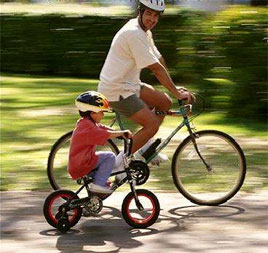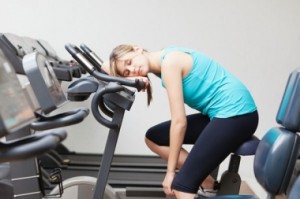 The investigative report should answer six key questions: who, what, when, where, why, and how. Fact should be distinguished from opinion, and both should be presented carefully and clearly. The report should include thorough interviews with everyone with any knowledge of the incident. A good investigation is likely to reveal several contributing factors, and it probably will recommend several preventive actions.
The investigative report should answer six key questions: who, what, when, where, why, and how. Fact should be distinguished from opinion, and both should be presented carefully and clearly. The report should include thorough interviews with everyone with any knowledge of the incident. A good investigation is likely to reveal several contributing factors, and it probably will recommend several preventive actions.
Get Enough Sleep
 Everyone needs to get enough sleep. Sleep helps keep your mind and body healthy.
Everyone needs to get enough sleep. Sleep helps keep your mind and body healthy.
How much sleep do I need? Most adults need 7 to 8 hours of good quality sleep on a regular schedule each night. Make changes to your routine if you can’t find enough time to sleep. Getting enough sleep isn’t only about total hours of sleep. It’s also important to:
- Go to sleep at about the same time every day.
- Get good quality sleep so you feel rested when you wake up.
If you often have trouble sleeping – or if you don’t feel well rested after sleeping – talk with your doctor.
via Get Enough Sleep.
Lockout-tagout
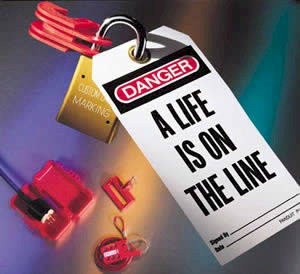 Lockout-tagout (LOTO) or lock and tag is a safety procedure which is used in industry and research settings to ensure that dangerous machines are properly shut off and not started up again prior to the completion of maintenance or servicing work. It requires that hazardous power sources be “isolated and rendered inoperative” before any repair procedure is started. “Lock and tag” works in conjunction with a lock usually locking the device or the power source with the hasp, and placing it in such a position that no hazardous power sources can be turned on. The procedure requires that a tag be affixed to the locked device indicating that it should not be turned on.
Lockout-tagout (LOTO) or lock and tag is a safety procedure which is used in industry and research settings to ensure that dangerous machines are properly shut off and not started up again prior to the completion of maintenance or servicing work. It requires that hazardous power sources be “isolated and rendered inoperative” before any repair procedure is started. “Lock and tag” works in conjunction with a lock usually locking the device or the power source with the hasp, and placing it in such a position that no hazardous power sources can be turned on. The procedure requires that a tag be affixed to the locked device indicating that it should not be turned on.
Preventing Eye Injuries at Home
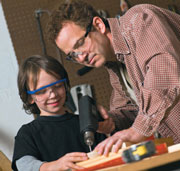 We want all Americans to be aware of the dangers to their eyes at home, in the workplace and while playing sports.
We want all Americans to be aware of the dangers to their eyes at home, in the workplace and while playing sports.
Thousands of eye accidents happen each day; 90 percent of these are preventable with the use of appropriate safety eyewear.
Because there are good eye safety regulations in the workplace, the home is the source of the fastest-growing number of eye injuries. Eye injuries are almost as great a danger to bystanders as the people using dangerous tools or chemicals in the home. Good eye protection is just as important for those watching you work as for the workers themselves.
Walking: Trim Your Waistline, Improve Your Health
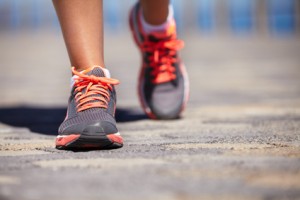 Can you really walk your way to fitness? You bet! Get started today.
Can you really walk your way to fitness? You bet! Get started today.
Physical activity doesn’t need to be complicated. Something as simple as a daily brisk walk can help you live a healthier life.
For example, regular brisk walking can help you:
- Maintain a healthy weight
- Prevent or manage various conditions, including heart disease, high blood pressure and type 2 diabetes
- Strengthen your bones
- Lift your mood
- Improve your balance and coordination
The faster, farther and more frequently you walk, the greater the benefits.
Turning your normal walk into a fitness stride requires good posture and purposeful movements. Ideally, here’s how you’ll look when you’re walking:
- Your head is up. You’re looking forward, not at the ground.
- Your neck, shoulders and back are relaxed, not stiffly upright.
- You’re swinging your arms freely with a slight bend in your elbows. A little pumping with your arms is OK.
- Your stomach muscles are slightly tightened and your back is straight, not arched forward or backward.
- You’re walking smoothly, rolling your foot from heel to toe.
As you start your walking routine, remember to:
- Get the right gear. Choose shoes with proper arch support, a firm heel and thick flexible soles to cushion your feet and absorb shock. If you walk outdoors when it’s dark, wear bright colors or reflective tape for visibility.
- Choose your course carefully. If you’ll be walking outdoors, avoid paths with cracked sidewalks, potholes, low-hanging limbs or uneven turf.
- Warm up. Walk slowly for five to 10 minutes to warm up your muscles and prepare your body for exercise.
- Cool down. At the end of your walk, walk slowly for five to 10 minutes to help your muscles cool down.
- Stretch. After you cool down, gently stretch your muscles. If you’d rather stretch before you walk, remember to warm up first.
For most healthy adults, the Department of Health and Human Services recommends at least two hours and 30 minutes a week of moderate aerobic activity or one hour and 15 minutes a week of vigorous aerobic activity — preferably spread throughout the week — and strength training exercises at least twice a week.
As a general goal, aim for at least 30 minutes of physical activity a day. If you can’t set aside that much time, try two 15-minute sessions or three 10-minute sessions throughout the day.
Remember, though, it’s OK to start slowly — especially if you haven’t been exercising regularly. You might start with five minutes a day the first week, and then increase your time by five minutes each week until you reach at least 30 minutes.
Keeping a record of how many steps you take, the distance you walk and how long it takes can help you see where you started from and serve as a source of inspiration. Just think how good you’ll feel when you see how many miles you’ve walked each week, month or year.
Record these numbers in a walking journal or log them in a spreadsheet or a physical activity app. Another option is to use an electronic device — such as a pedometer — to calculate steps and distance.
Starting a walking program takes initiative. Sticking with it takes commitment. To stay motivated:
- Set yourself up for success. Start with a simple goal, such as, “I’ll take a 10-minute walk during my lunch break.” When your 10-minute walk becomes a habit, set a new goal, such as, “I’ll walk for 20 minutes after work.” Soon you could be reaching for goals that once seemed impossible.
- Make walking enjoyable. If you don’t enjoy solitary walks, ask a friend or neighbor to join you. If you’re invigorated by groups, join a health club.
- Vary your routine. If you walk outdoors, plan several different routes for variety. If you’re walking alone, be sure to tell someone which route you’re taking.
- Take missed days in stride. If you find yourself skipping your daily walks, don’t give up. Remind yourself how good you feel when you include physical activity in your daily routine — and then get back on track.
Once you take that first step, you’re on the way to an important destination — better health.
via Walking: Trim your waistline, improve your health – Mayo Clinic.
Kids and Bicycle Safety
Before using your bicycle, make sure it is ready to ride. You should always inspect your bike to make sure all parts are secure and working properly.
Remember to:
- Wear a Properly Fitted Bicycle Helmet. Protect your brain, save your life.
- Adjust Your Bicycle to Fit. Stand over your bicycle. There should be 1 to 2 inches between you and the top tube (bar) if using a road bike and 3 to 4 inches if a mountain bicycle. The seat should be level front to back. The seat height should be adjusted to allow a slight bend at the knee when the leg is fully extended. The handlebar height should be at the same level with the seat.
- Check Your Equipment. Before riding, inflate tires properly and check that your brakes work.
- See and Be Seen. Whether daytime, dawn, dusk, foul weather, or at night, you need to be seen by others. Wearing white has not been shown to make you more visible. Rather, always wear neon, fluorescent, or other bright colors when riding day or night. Also wear something that reflects light, such as reflective tape or markings, or flashing lights. Remember, just because you can see a driver doesn’t mean the driver can see you.
- Control Your Bicycle. Always ride with at least one hand on the handlebars. Carry books and other items in a bicycle carrier or backpack.
- Watch for and Avoid Road Hazards. Be on the lookout for hazards such as potholes, broken glass, gravel, puddles, leaves, and dogs. All these hazards can cause a crash. If you are riding with friends and you are in the lead, yell out and point to the hazard to alert the riders behind you.
- Avoid Riding at Night. It is far more dangerous to ride at night than during the day because you are harder for others to see. If you have to ride at night, wear something that makes you more easily seen by others. Make sure you have reflectors on the front and rear of your bicycle (white lights on the front and red rear reflectors are required by law in many States), in addition to reflectors on your tires, so others can see you.
Many bicycle-related crashes resulting in injury or death are associated with the bicyclist’s behavior, including such things as not wearing a bicycle helmet, riding into a street without stopping, turning left or swerving into traffic that is coming from behind, running a stop sign, and riding the wrong way in traffic. To maximize your safety, always wear a helmet AND follow the rules of the road.
Measure How Stress Effects Your Health
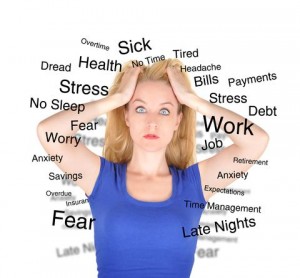 To measure stress according to the Holmes and Rahe Stress Scale, the number of “Life Change Units” that apply to events in the past year of an individual’s life are added and the final score will give a rough estimate of how stress affects health.
To measure stress according to the Holmes and Rahe Stress Scale, the number of “Life Change Units” that apply to events in the past year of an individual’s life are added and the final score will give a rough estimate of how stress affects health.
Life event Life change units:
- Death of a spouse 100
- Divorce 73
- Marital separation 65
- Imprisonment 63
- Death of a close family member 63
- Personal injury or illness 53
- Marriage 50
- Dismissal from work 47
- Marital reconciliation 45
- Retirement 45
- Change in health of family member 44
- Pregnancy 40
- Sexual difficulties 39
- Gain a new family member 39
- Business readjustment 39
- Change in financial state 38
- Death of a close friend 37
- Change to different line of work 36
- Change in frequency of arguments 35
- Major mortgage 32
- Foreclosure of mortgage or loan 30
- Change in responsibilities at work 29
- Child leaving home 29
- Trouble with in-laws 29
- Outstanding personal achievement 28
- Spouse starts or stops work 26
- Beginning or end school 26
- Change in living conditions 25
- Revision of personal habits 24
- Trouble with boss 23
- Change in working hours or conditions 20
- Change in residence 20
- Change in schools 20
- Change in recreation 19
- Change in church activities 19
- Change in social activities 18
- Minor mortgage or loan 17
- Change in sleeping habits 16
- Change in number of family reunions 15
- Change in eating habits 15
- Vacation 13
- Major Holiday 12
- Minor violation of law 11
Score of 300+: At risk of illness.
Score of 150-299: Risk of illness is moderate (reduced by 30% from the above risk).
Score <150: Only have a slight risk of illness.
via Holmes and Rahe stress scale – Wikipedia, the free encyclopedia.
Internet Social Networking Risks
 Social networking sites are Internet-based services that allow people to communicate and share information with a group.
Social networking sites are Internet-based services that allow people to communicate and share information with a group.
Risks:
Once information is posted to a social networking site, it is no longer private. The more information you post, the more vulnerable you may become. Even when using high security settings, friends or websites may inadvertently leak your information.
Personal information you share could be used to conduct attacks against you or your associates. The more information shared, the more likely someone could impersonate you and trick one of your friends into sharing personal information, downloading malware, or providing access to restricted sites.
Predators, hackers, business competitors, and foreign state actors troll social networking sites looking for information or people to target for exploitation.
Information gleaned from social networking sites may be used to design a specific attack that does not come by way of the social networking site.
Keep Employee Communications SIMPLE!
 Keep It Simple Stupid! We have all heard this a thousand times. Yet it is often pushed aside when it comes to communicating with others. How does it apply to your employee communications?
Keep It Simple Stupid! We have all heard this a thousand times. Yet it is often pushed aside when it comes to communicating with others. How does it apply to your employee communications?
Documents are often filled with jargon, long sentences and unnecessary information. This resulting communication makes it hard for your audience to take action, to understand your ideas, and often hurts employee engagement.
Checking the readability score of your communication can often make the difference. Most corporate communication is often written at the 11th to 12th grade level – or higher. The goal for your communication should be keeping the readability score at the 7th or 8th grade level.
You can check your document score at https://readability-score.com
Signs of Over-Exercising
1. Your workout leaves you exhausted versus energized. If you finish your workout feeling like you need a nap, rather than feeling revitalized and ready to conquer the next thing, you are likely pushing yourself too hard or too long, and it may be time to assess and scale back those workouts.
2. You are unexplainably irritable and moody. If small things are setting you off, and you can’t figure out why your fuse is short or your moods are so funky, this could be a sign that your body is worn down and fatigued. Your body may be screaming for a vacation from exercise, so take one!
3. You’re sleeping too much or can’t sleep. Are you restless and unable to sleep through the night no matter how tired you feel? OR, does it not matter how much sleep you get you STILL feel tired? Both of these can be caused by overtraining. When you exercise too much, your body can interpret it as a stressor, sending out stress hormones like cortisol that makes sleeping difficult. On the flip side, overtraining can actually make some people more tired than normal. Sleep is the time when the body and brain repairs itself, so if you’re pushing it too hard, your body might be telling you that it needs more rest that you’re giving it.
4. You have ”heavy” legs. Rather than walking or jogging with ease, your legs feel like dead weights. Heavy, tired and overly fatigued legs (or arms) can be caused by muscles that just haven’t had enough time to fully recharge and repair.
5. You get sick frequently or can’t seem to recover. When you over-exercise you break your body and immune system down, so you are more susceptible to getting sick, or it takes you longer to recover.
6. You feel sore for days at a time. Rather than bouncing back from a tough workout, if your body is constantly aching or sore it’s a warning that you need to step back and allow it to repair itself.
7. You feel unmotivated and/or “blue.” It seems ironic since exercise has been shown to boost feel-good endorphins, but overtraining has been linked to a decrease in energy and mood, so you need to relax and restore.

